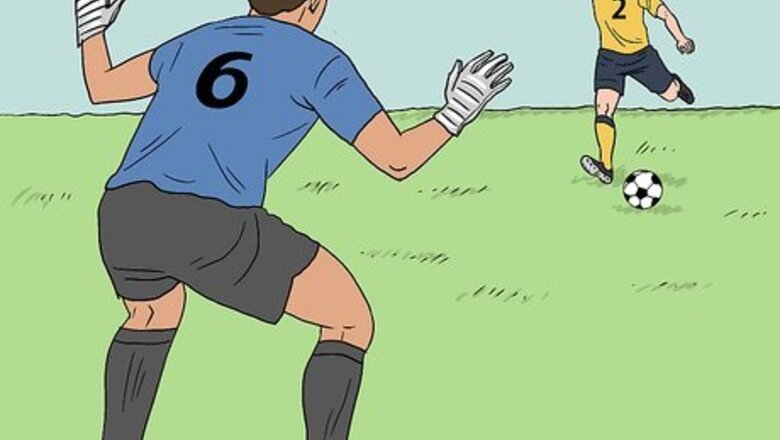
views
Saving a Ground Shot
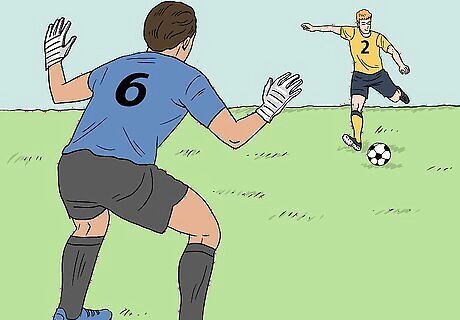
Stand with your knees bent and your hands out to block the ball. Crouch down to prepare to launch at the ball. Keep your center of gravity low to the ground while leaning forward on your toes, but don’t lose sight of the ball. You still need to be able to track it. Pick your head up and follow the ball until you see someone preparing to shoot. When a player moves to shoot the ball, you will see them run forward to hit the ball with force. Keep your hands up in case the ball flies at you. You may need to make a quick block or stretch for a safe. It’s much easier to do when you’re prepared! Keep your knees bent, hands in and thumbs together, this will allow you to keep both hands behind the ball.
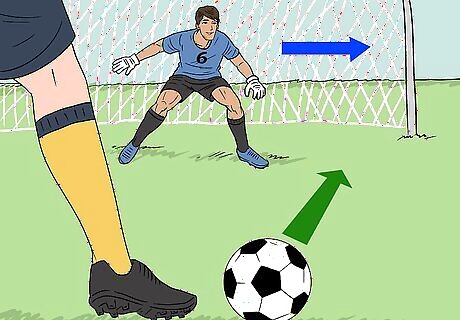
Move toward the ball with some small steps to get close to it. Watch the ball’s trajectory as the shooter moves to kick it. When you notice that it’s staying low, step to the side until you’re certain it’s in your range. You still need to face forward to track the ball, so don't turn your body to the side. Shuffle across the goal by taking a few small, quick steps. Get as close to the ball as you can to make the save easier. Look at the kicker’s form to predict where the ball is going. If it’s low, they will hit the middle or top side of the ball instead of the bottom. Keeping your eyes open will always pay off on the field. Try to position yourself where you think the ball will end up so you don’t have to move as far. If you see that the ball is going to the other side of the goal, you may need to turn and run to reach it.
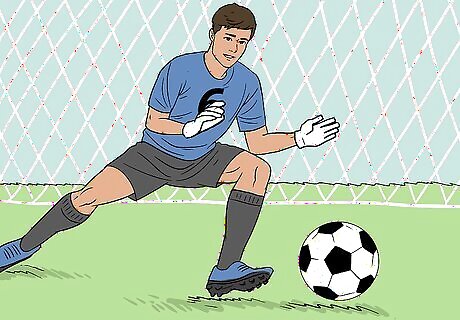
Lower your leg and lean sideways to reach for a ground ball. Once the ball gets close enough for you to reach it, turn your leading foot sideways a little bit. Push your foot down against the turf to bend your knee. Also, incline your body in the direction of the ball. This will give you the option of pouncing with force to cover more distance if you need to in order to reach the ball. Start your lean after you get into position to save the ball. Keep your head up so you don’t lose sight of where it’s going.
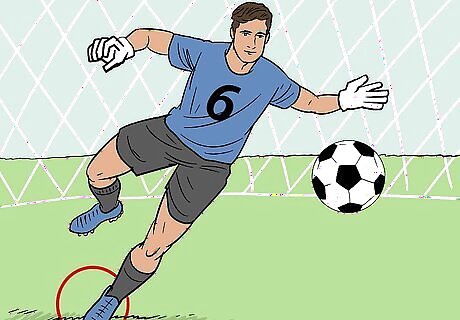
Push off with your front foot to start the dive. Your front foot is the one you tucked in to bring down your knee. Use it to launch yourself toward the ball. The force you use depends on how far you need to move. To reach a ball hit low, you often won’t need to push down with much force. For example, if the ball is close to your body, fall sideways toward it. You don’t need to push off with much force to smother it. If it’s on the opposite side of the goal, press down hard to launch yourself off the ground. Be quick when putting your foot down, since for most shots you won’t have much time to react.
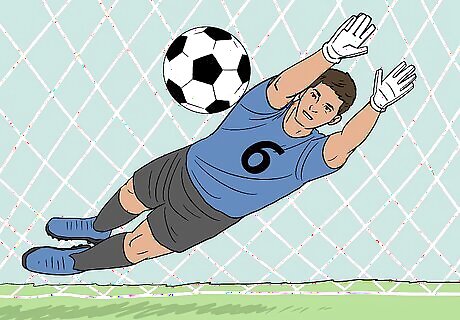
Stretch your arms out ahead of you to turn your body horizontally. Go horizontal to get the most range and the safest landing from your dive. Once you push off with your foot, reach out with your hands to meet the ball. If you’re diving a long distance, this will force your feet off the ground as well. The exact angle of your body during the dive depends on where the ball is. Generally, try to be parallel with the ground. If the ball is close to you, you may not need to extend fully to reach it.
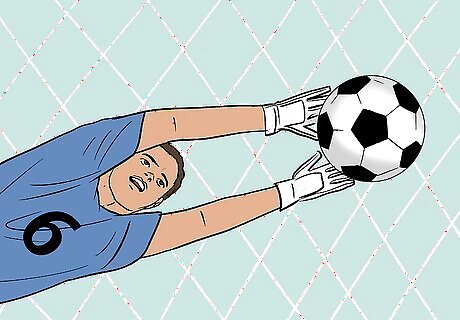
Catch or parry the ball with your outstretched hands. To catch the ball, spread out your fingers and bring your thumbs together to form a W shape. Get your hands behind the ball so it strikes your thumbs first. Keep your lower hand behind the ball, then close your other hand on top of it to control it. If you aren’t able to get your hands behind the ball, you will need to parry it. Parrying is when you push the ball away from the goal. Reach out to it and use your palm to shove it to the side.
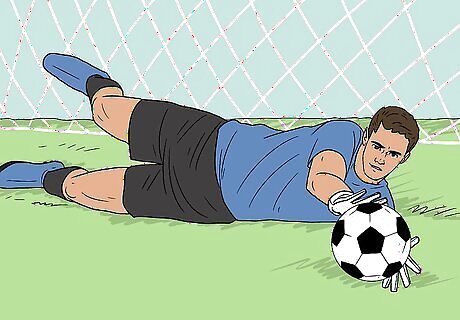
Fall on your shoulder and hip to land safely. Watch your wrist so it doesn’t hit the ground. If you're able to get your body parallel to the ground, you can avoid injuries no matter how far you traveled. Stay stretched out until you’re on the ground with the ball under control. To cushion yourself, hold the ball slightly below your body so it hits the ground first. Maintain your grip on the ball so it doesn’t pop out. Catch it and hold it out ahead of you, but don’t slam it against the ground.
Stopping a High Shot
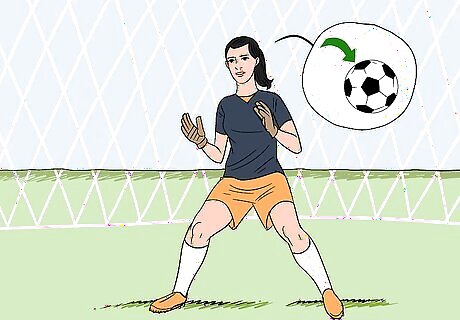
Stand with your knees bent and your legs spread apart. Set your feet about hip-width apart after getting into position to make the save. Lower yourself to the ground with a slight bend of the knees, giving you leverage to chase after the ball. When you’re in the proper stance, your body will feel flexible and give you a full range of motion across the goal. Keep in mind that you need to track the ball in order to get into position to make the save. Watch the ball and move toward where you expect the shot to go. Crouch down when you need to dive.
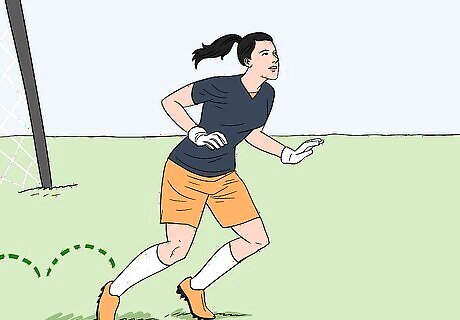
Take small steps toward the ball to reach it. Move your feet to the side first, taking a single step. Follow up with another small step forward from the goal. You won’t have much time to prepare for a dive, so be quick. Aerial shots are harder to reach due to the big target behind you, but the steps you take help you launch yourself further. As a goalie, never dive back toward the goal. Make that a cardinal rule you follow to prevent the ball from bouncing off you and into the net. If you step forward, you will also dive forward. Small steps only work if you’re in position to make the save. If you’re on the wrong end of the goal, you may need to run in order to have a chance of reaching the ball in time.
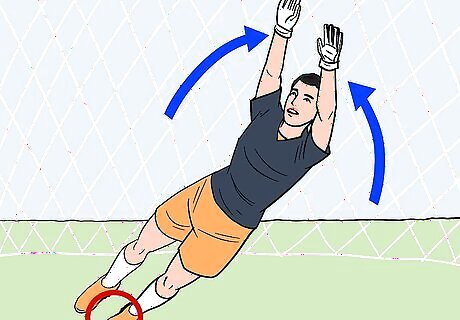
Push off with your front foot to start the dive. With your knees bent, drive your leading foot into the ground. This will be the foot closest to the ball. As you propel yourself with your leading foot, lift your back foot up. Swing your arms up as you push off with your foot. It’s useful for gaining momentum as you try to get airborne.
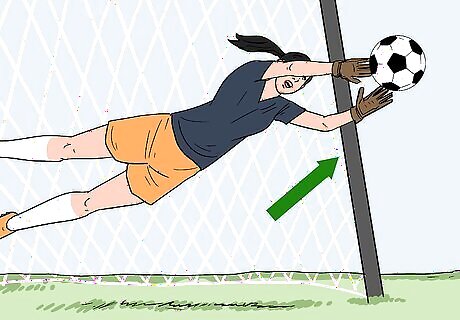
Jump toward the ball with your body parallel to the ground. Lift your arms out ahead of you as your legs leave the ground. Level out your body as much as possible to cover plenty of ground as well as prepare for your eventual landing. Also, move your hands close to one another to prepare to make the save. Your exact positioning depends on where the ball goes, so keep an eye on it. Stretching horizontally gives you the most range, but you may need to bend your body back a little to reach tough shots to the upper corners of the net.
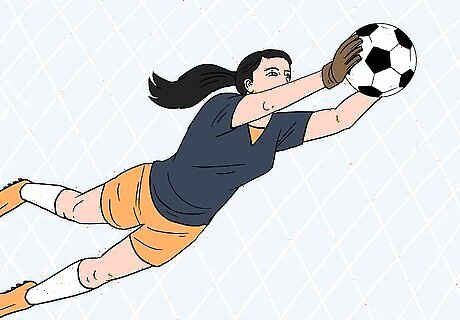
Catch the ball by cradling it between your hands. Improve your ability to make the save by opening your hands and spreading your fingers wide. Touch your thumbs together, holding them side by side so your hands form a W. Let the ball hit your thumbs first so you can better control it. Wrap the fingers on your lower hand over the ball, placing your other hand over its top to prevent it from trickling behind you. If you’re dealing with a tough, hard shot you can’t quite reach, palm it out of harm’s way. Stretch your hand out so the ball hits your palm. Keep your hand stiff and straight as you push the ball away from the goal.
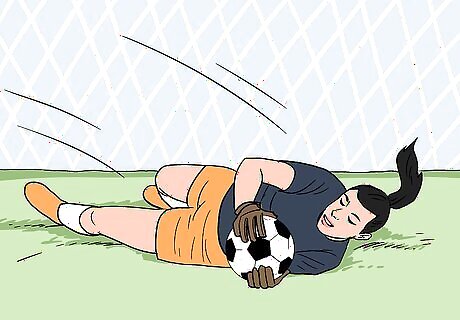
Land on your side to complete the dive. Stay horizontal as you fall to the ground. Many goalies roll over when they first learn to dive, but this isn’t safe. If you caught the ball, move it down so it’s slightly below your body. Let it hit the ground first, followed by your hip and shoulder. Remember to catch the ball first before focusing on landing with it. If you get ahead of yourself, you might discover there is nothing in your hands when you land! After you land, be prepared to protect the ball from oncoming attackers. Pull the ball toward your stomach to shield it. If you drop it, chase after it before the other team reaches it!
Simulating Contact
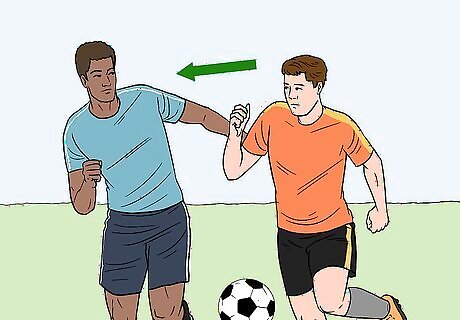
Move toward a player on the other team to prepare for the dive. Diving with nobody around won’t fool anybody. To make it look convincing, you have to get up close to your opponent. You get plenty of opportunities to do this while you’re playing the game normally. Look for chances when you’re dribbling, for instance, or fighting for control of a loose ball. The art of a good dive is making it look convincing. Try to get in the way of your opponent. Force them to get close to you or even bump into you.
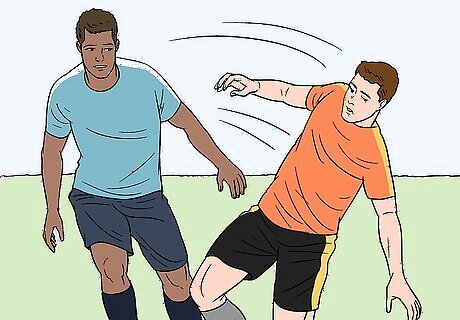
Anticipate when your opponent will get close to you. Diving all depends on proper timing. The best time to sell a dive is when your opponent moves toward you. If they touch you, take advantage of the opportunity to exaggerate the contact. Even if they don’t hit you, prepare to fall to the ground. For example, if your opponent sticks their foot out while you’re dribbling, you could pretend to trip over them. If your opponent shoulders into you from the side, bounce off of them to begin the dive.
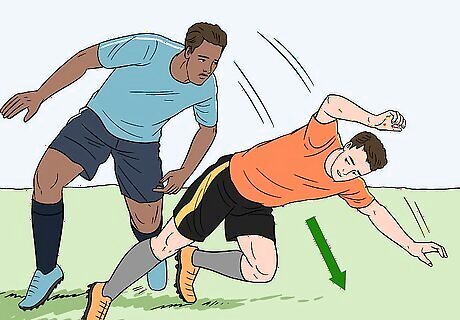
Fall to the ground in a natural and convincing way. The way you need to react depends upon the play. Picture what would happen if you actually got tackled or bumped. Then, move in a way that makes sense according to the challenge. A strong tackle while you’re running, for instance, might send you sprawling forward. If a defender pokes the ball away while you’re dribbling, try dragging your feet a little to fall forward. Make the dive look more realistic by dragging the tops of your feet over the defender’s leg. For challenges coming in from the side, fall in the opposite direction of your opponent like you’re bouncing off of them after the collision. If a defender is behind you, you could fall backward to pretend like they tugged your jersey. Try jerking your head back and raising your arms as you fall back.
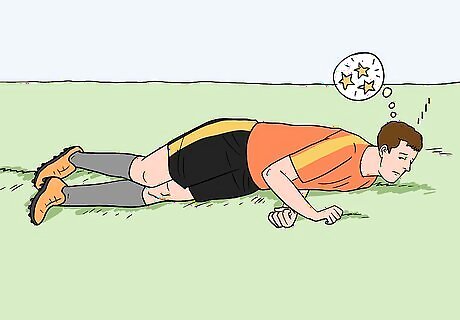
Make the dive look realistic by reacting in pain. Stay on the ground for a few seconds so the referee has to make a decision about what to do next. If you’re pretending that you took a hard hit, consider grimacing a little bit or even holding the part of your body that got hit. Don’t make the challenge look too violent since that could backfire on you. Even professionals flop over, roll around, and grimace in agony when diving sometimes. It’s often pretty obvious when they’re faking. You’re better off sticking with a small reaction instead of overacting. Keep in mind which part of your body you are pretending the defender hit. If you’re faking a trip, grabbing your face won’t do you any good. Hold onto your shin or ankle instead.
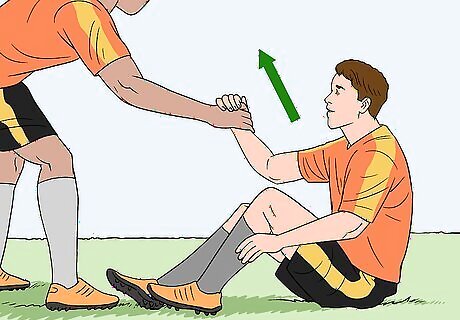
Get up slowly or limp around after the dive. Don’t spend too much time on the ground, however. Count to 3, then slowly get back on your feet. If you’re selling a harsh tackle, walk and trot around for a few seconds before getting back into the game. Diving is a part of the game, but it isn’t well-received by others. Expect to get penalized if you get caught, and if you dive a lot, you might get a reputation as a flopper. Like how you limit your reaction to a dive, limit the number of dives you do in a game. Save it for the most critical time in a game, such as when you’re right in front of the goal. You could draw a foul when you lose control of the ball.




















Comments
0 comment